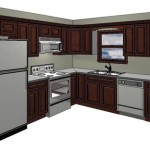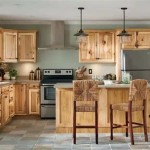Unfinished Kitchen Island With Seating: A Comprehensive Guide
An unfinished kitchen island with seating presents a unique opportunity for homeowners to personalize and customize their kitchen space. Unlike pre-finished islands, these islands arrive ready for the application of paint, stain, or other finishing techniques, allowing for seamless integration with existing cabinetry and décor. This article will explore the advantages, considerations, and best practices associated with incorporating an unfinished kitchen island with seating into a home's design.
The appeal of an unfinished island lies primarily in its versatility. Homeowners are not limited to the pre-determined finishes offered by manufacturers. Instead, they can choose a finish that precisely matches or complements their existing kitchen elements, ensuring a cohesive and aesthetically pleasing look. This is particularly beneficial when renovating or updating a kitchen piecemeal, allowing for a gradual transition without clashing styles.
Furthermore, an unfinished island often allows for greater control over the quality of materials and construction. While pre-finished islands can sometimes cut corners on materials to reduce costs, unfinished islands are often available in higher-quality wood species, such as maple, oak, or cherry. This provides a more durable and long-lasting piece of furniture, particularly important for a high-traffic area like a kitchen island.
Adding seating to a kitchen island transforms it from a simple workspace into a multifunctional hub. It creates a casual dining area, perfect for quick meals or morning coffee. It also provides a gathering space for family and friends while cooking or entertaining. The addition of seating encourages interaction and makes the kitchen a more inviting and social space.
However, several factors must be considered before purchasing and finishing an unfinished kitchen island with seating. Proper planning and execution are crucial to achieving the desired aesthetic and functionality. These factors include the island's size and layout, the choice of materials, the finishing process, and the type of seating incorporated.
The ideal size and layout of the island will depend on the available space in the kitchen and the homeowner's specific needs. A small kitchen may only accommodate a compact island with minimal seating, while a larger kitchen can accommodate a more substantial island with ample counter space and seating for multiple people. The layout should also consider the flow of traffic within the kitchen, ensuring that the island does not obstruct movement or create bottlenecks.
The selection of materials for the island is also a critical consideration. Solid wood is a popular choice for its durability and aesthetic appeal. However, other materials, such as plywood or MDF (Medium-Density Fiberboard), may be used for certain components to reduce costs or provide specific structural advantages. It is essential to choose materials that are appropriate for the intended use and that will withstand the rigors of daily kitchen activity.
The finishing process is perhaps the most crucial aspect of working with an unfinished kitchen island. It involves preparing the wood surface, applying the chosen finish, and protecting the finish with a topcoat. The type of finish will depend on the desired aesthetic and the type of wood used. Paint provides a solid color and can be easily customized, while stain enhances the natural grain of the wood. A clear topcoat is essential to protect the finish from scratches, stains, and moisture.
Finally, the choice of seating will have a significant impact on the overall look and feel of the kitchen island. Bar stools are a popular choice, but other options, such as counter-height chairs or backless stools, may be more appropriate depending on the island's height and the homeowner's preferences. It is essential to choose seating that is comfortable, durable, and aesthetically pleasing.
Key Point 1: Customization and Aesthetic Integration
The primary advantage of an unfinished kitchen island is the unparalleled level of customization it offers. Unlike pre-finished options, homeowners can select a stain, paint, or other finishing technique that perfectly complements their existing cabinetry, flooring, and overall kitchen décor. This allows for a seamless integration of the island into the existing space, creating a cohesive and harmonious design.
This customization extends beyond just the color and finish. Homeowners can also choose the type of wood used for the island, selecting a species that matches or complements their existing cabinetry. Different wood species have different grain patterns and textures, adding another layer of customization to the project. For example, maple is a light-colored hardwood with a tight grain, while oak is a darker hardwood with a more open grain. Choosing the right wood species can significantly impact the overall aesthetic of the kitchen.
Furthermore, an unfinished island allows for the incorporation of unique design elements that may not be available in pre-finished options. This could include custom trim work, decorative moldings, or even built-in features like wine racks or spice drawers. By working with an unfinished island, homeowners have the freedom to create a truly unique and personalized kitchen space.
Consider a kitchen with existing cherry cabinets. Finding a pre-finished island in a perfect cherry match can be challenging. However, with an unfinished island, the homeowner can select a cherry island and apply a stain that precisely matches the existing cabinetry, creating a seamless and integrated look. This level of control is simply not possible with pre-finished options.
The ability to customize the finish also allows homeowners to address specific design challenges. For example, if the existing kitchen lighting is casting a warm hue, the homeowner can select a cooler-toned finish for the island to balance the overall color palette. This level of fine-tuning can significantly enhance the overall aesthetic of the kitchen and create a more visually appealing space.
Key Point 2: Cost-Effectiveness and Value
While the initial cost of an unfinished kitchen island may be comparable to or even slightly higher than a pre-finished option, the long-term cost-effectiveness and value proposition are often more favorable. This is due to several factors, including the potential for cost savings on installation, the increased lifespan of a high-quality unfinished island, and the added value it brings to the home.
Installation costs can be reduced because unfinished islands are often easier to modify and adapt to the existing kitchen space. For example, if the island needs to be trimmed to fit a specific area, it is easier to do so with an unfinished island than with a pre-finished one. This can save time and money on installation labor.
Furthermore, unfinished islands are often constructed from higher-quality materials than pre-finished options. This is because manufacturers of pre-finished islands often cut corners on materials to reduce costs. By choosing an unfinished island, homeowners can select a high-quality wood species and ensure that the island is built to last. This can extend the lifespan of the island and reduce the need for repairs or replacements.
The added value that an unfinished kitchen island brings to the home is also a significant factor to consider. A well-designed and finished kitchen island can significantly enhance the overall aesthetic of the kitchen and increase the home's resale value. This is particularly true if the island is customized to fit the specific needs and preferences of the homeowner.
Consider a scenario where a homeowner is renovating their kitchen and wants to add a kitchen island. They have two options: a pre-finished island from a big-box store or an unfinished island from a local cabinet maker. The pre-finished island is cheaper upfront, but it is made from low-quality materials and may not match the existing cabinetry. The unfinished island is more expensive upfront, but it is made from high-quality materials and can be customized to perfectly match the existing cabinetry. In the long run, the unfinished island is likely to be the more cost-effective option because it will last longer and add more value to the home.
The investment in an unfinished kitchen island can be viewed as a long-term investment in the home. It is an opportunity to create a custom-designed piece of furniture that will enhance the kitchen's functionality and aesthetic appeal for years to come. This can be a wise financial decision, especially if the homeowner plans to stay in the home for a long time.
Key Point 3: The Importance of Proper Finishing Techniques
The success of an unfinished kitchen island project hinges heavily on the proper application of finishing techniques. A poorly finished island can detract from the overall aesthetic of the kitchen and even damage the wood. Therefore, it is essential to understand the different finishing techniques and to follow the recommended procedures for each.
The first step in the finishing process is to prepare the wood surface. This involves sanding the wood to remove any imperfections and create a smooth surface for the finish to adhere to. The sanding process should be done in stages, starting with a coarse grit sandpaper and gradually moving to a finer grit. It is essential to sand with the grain of the wood to avoid scratching or damaging the surface.
Once the wood has been sanded, it is important to clean the surface thoroughly to remove any dust or debris. This can be done with a tack cloth or a vacuum cleaner with a brush attachment. It is essential to ensure that the surface is completely clean before applying the finish.
The next step is to apply the chosen finish. This could be paint, stain, or a clear coat. The type of finish will depend on the desired aesthetic and the type of wood used. It is essential to follow the manufacturer's instructions for applying the finish. This may involve applying multiple coats and allowing each coat to dry completely before applying the next.
After the finish has been applied, it is important to protect it with a topcoat. The topcoat will protect the finish from scratches, stains, and moisture. There are many different types of topcoats available, including polyurethane, lacquer, and varnish. It is essential to choose a topcoat that is compatible with the chosen finish.
Consider a homeowner who wants to stain their unfinished kitchen island. They start by sanding the wood surface, but they skip the step of cleaning the surface before applying the stain. As a result, the stain does not adhere properly to the wood, and the finish is uneven and blotchy. This could have been avoided by taking the time to clean the surface thoroughly before applying the stain.
Proper finishing techniques are essential for achieving a professional-looking finish on an unfinished kitchen island. By taking the time to prepare the wood surface, apply the finish correctly, and protect the finish with a topcoat, homeowners can create a beautiful and durable kitchen island that will enhance the overall aesthetic of their kitchen for years to come. If unsure about the process, consulting with a professional finisher is highly recommended to ensure a quality outcome.

Kitchen Island With Seating Etsy

Diy Gorgeous Kitchen Island From Unfinished Cabinet Butcher Block Top Hometalk

Unfinished Kitchen Islands Pictures Ideas From Hgtv

Kitchen Island Custom Butcher Block With Option For Seating Dining Table Storage Donna Etsy

Diy Gorgeous Kitchen Island From Unfinished Cabinet Butcher Block Top Hometalk

How To Build A Diy Kitchen Island House By The Bay Design

Gathering Kitchen Island Ana White

Tenleaf White Wood 82 7 In Kitchen Island With Extendable Dining Table Power Outlet 2 Drawers And Side Open Shelves 17104810w

Do It Yourself Kitchen Islands From Stock Cabinets

Diy Kitchen Island From New Unfinished Furniture To Antique The Inspired Room








